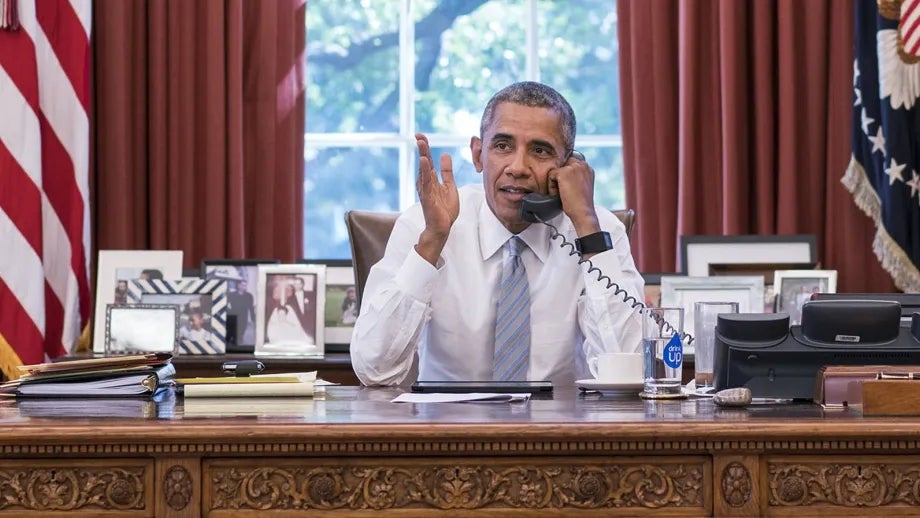"FAST" Action by Congress to Sustain Federal Transportation Funding
On December 4, 2015, just a day after approval by Congress, President Obama signed H.R. 22, the FAST Act (Fixing America’s Surface Transportation Act), establishing funding levels and federal policy for our nation’s highways and public transit systems for fiscal years (FY) 2016 through FY 2020. The bill lived up to its name with its relatively speedy transit through Congress after years of inertia and stop-gap spending authorizations, and with its equally speedy approval by the president. The bill authorizes $305 billion in spending over five years, with $281 billion from the Highway Trust Fund plus $24 billion from the General Fund.
"The $305 billion, five-year bill is the most significant federal reauthorization measure in a decade, and it gives state and local government much-needed certainty in funding for the next several years," said MTC Executive Director Steve Heminger.
The FAST Act maintains the core highway and transit funding programs that were already established by its predecessor, MAP 21 or Moving Ahead for Progress in the 21st Century (passed in 2012). Two new programs established by the FAST Act are the National Highway Freight Program, a formula program focused on goods movement that receives $6.3 billion over five years and a competitive Nationally Significant Highway and Freight Projects program, which receives $4.5 billion over five years.
Relative to FY 2015 spending, the FAST Act boosts transit funding by 10 percent in FY 2016, while highway funding is increased by 5 percent. Thereafter, the annual growth rate for both highways and transit is slightly above 2 percent. In lieu of raising the gas tax to close the gap between annual expenditures and annual revenue deposited in the Highway Trust Fund (HTF), the bill is paid for by a variety of budgetary sleights of hand that enable a transfer to the HTF of approximately $70 billion in General Fund revenue. (Once transferred to the HTF, those funds are no longer considered General Fund revenue and are included within the $281 billion referenced above.) The federal gas tax is a flat rate of 18.4 cents per gallon and has not been raised since 1993.
For the San Francisco Bay Area, the FAST Act will provide a welcome increase in both roadway and transit funding. Relative to FY 2015 funding levels, the FAST Act provides the region with approximately $30 million more in transit formula funding in FY 2016, with the bump ramping up to $64 million by FY 2020. With respect to highway formula funding, the FAST Act provides the region approximately $14 million in FY 2016 over FY 2015 levels, with the bump rising to $37 million by FY 2020.
Highway Funding
With respect to the Bay Area’s share of highway formula funding, MTC estimates that over the five-year life of the act, approximately $834 million will flow to the region in Surface Transportation Program (STP) and Congestion Mitigation and Air Quality (CMAQ) funding — the two sources of flexible federal highway funds that come directly to the Bay Area for decision. These funds are used for the region’s One Bay Area Grant Program (OBAG), the second cycle of which was approved in November 2015. This is about $69 million more than anticipated over the five-year period, including $30 million in additional CMAQ funding and $39 million in additional STP funds. When the FAST Act’s annual growth rate is extrapolated through FY 2022 (the final year of the OBAG 2 programming cycle), funding would be up by approximately $93 million.
Transit Funding
Receiving the largest boost of any formula program is the State of Good Repair (SGR) Program (Section 5337, Federal Transit Administration/FTA funds), which increased almost 16 percent in FY 2016, with an almost 2 percent annual growth thereafter. This is good news for the Bay Area because of the region's tremendous transit capital replacement needs and because the Bay Area receives a larger share of this program than any of the federal transit formula programs (8 percent of the nationwide amount vs. 4 percent for other programs). The bill provides the region with approximately $1 billion in 5337 SGR funds over the five-year period. This includes a $27 million increase over FY 2015 funding levels in FY 2016, rising to a $41 million boost by FY 2020.
With respect to Urbanized Area funding (Section 5307 FTA funds), the other major transit formula program, the FAST Act provides the Bay Area approximately $1.1 billion over the five-year period. This includes a $4 million increase over FY 2015 funding levels in FY 2016, rising to a $22 million boost by FY 2020.
See the Advocacy section of the website for more details about the act and its impact on the Bay Area.


Submit your comment
In order to receive a reply to your comment, please provide an email address.